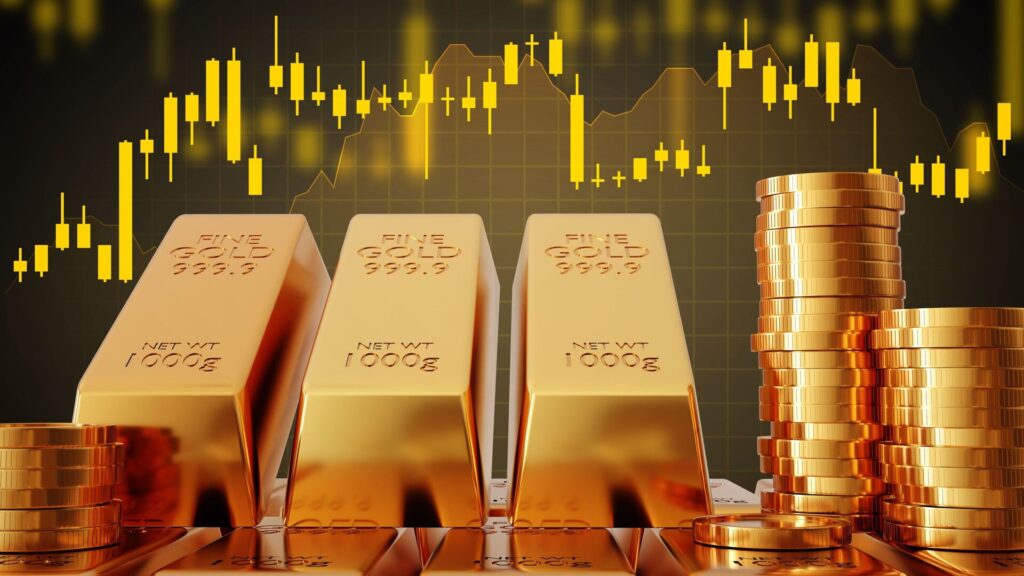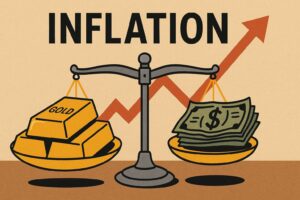
Gold has surged from $2,624 at the start of 2025 to over $3,800 per ounce today. But even during powerful bull markets, prices rarely move up in a straight line. Periods of retracement or sideways trading — known as gold price consolidation — are a normal part of the cycle.
For long-term investors, these pauses aren’t setbacks. They’re often the moments when disciplined buyers quietly build positions before the next leg higher. The question is: could this consolidation be your next strategic entry point?
What is Gold Price Consolidation?
Gold price consolidation happens when the market trades within a defined range after a sharp move. Think of it as the market “catching its breath.” Prices fluctuate between support and resistance, with lower volatility compared to strong trends.
This stage serves an important purpose. It allows supply and demand to rebalance and gives investors time to reassess. Historically, many of gold’s biggest breakouts have followed consolidation phases — especially during times of macroeconomic stress.
What’s Driving Today’s Markets?
After its record run, gold is stabilizing within a range. Several forces are shaping this consolidation:
- Federal Reserve Policy: With rates peaking and the Fed balancing inflation control against growth concerns, monetary policy remains a critical driver. Any shift toward rate cuts could be the spark that ends consolidation.
- Geopolitical Uncertainty: From U.S.-China trade tensions to ongoing conflicts in Eastern Europe and the Middle East, safe-haven demand continues to support prices.
- Dollar Weakness: Gold’s inverse relationship to the U.S. dollar means currency moves directly influence where support and resistance levels form.
- Technical Boundaries: Analysts are watching a more relevant consolidation band between $3,400–$3,600 (support) and $3,900–$4,000 (resistance). A breakout or breakdown beyond that range could mark the next directional move.
In this environment, gold is no longer just a speculative play. Central bank demand and emerging-market accumulation are putting a structural floor under prices.
Historical Context & 2025 Outlook
Gold’s track record shows that extended consolidation periods often set the stage for powerful rallies. After pausing around $600–$700 in 2006, gold eventually ran to $1,900 by 2011. During the 2020 pandemic, gold consolidated for months before surging to new all-time highs.
Looking into 2025, several catalysts could end the current pause:
- Fed rate cuts if growth falters.
- Renewed geopolitical flare-ups.
- Currency volatility, particularly in the dollar and yuan.
- Structural central bank and BRICS+ demand.
In short, consolidation is less a sign of weakness than a chance for positioning.
How to Spot Buying Opportunities
During consolidation, smart investors use a combination of technical, fundamental, and sentiment indicators:
- Technical Clues: Watch for gold to hold above key support levels with rising volume. When RSI and moving averages approach oversold territory, that’s often a signal for attractive entry points.
- Fundamental Drivers: Real interest rates, inflation expectations, and central bank purchases remain crucial. Negative real rates or renewed buying by major central banks (like the People’s Bank of China) have historically preceded rallies.
- Market Sentiment: Extreme bearishness during stable prices often signals accumulation by “strong hands” — institutional and central bank buyers quietly building positions.
Strategic Approaches by Investor Profile
- Conservative Investors: Use dollar-cost averaging to build your position gradually. Allocating 5–15% of your portfolio to gold provides portfolio insurance while avoiding the risk of poor timing.
- Moderate Investors: Look for pullbacks to support zones for entry, and use stop-losses just below key technical levels to manage risk.
- Active Traders: Range-trade between support and resistance, but stay alert — consolidations rarely last forever, and breakouts can be swift.
Taking Action: Next Steps for Investors
If you’re considering adding gold during this consolidation:
- Review Your Allocation: Does your portfolio include 5–15% in precious metals? If not, this could be the time to establish or expand that position.
- Pick Your Vehicle: Choose between physical bullion, ETFs, or mining equities based on goals.
- Define Entry & Exit Rules: Know your support levels, position sizes, and exit triggers before you buy. Having a plan eliminates emotional decision-making.
- Stay Informed: Track Fed policy announcements, central bank buying trends, and technical chart levels for confirmation signals.
Will You Be Ready When Gold Breaks Out?
Periods of gold price consolidation aren’t pauses in the bull case — they’re opportunities for disciplined investors to act. With central banks putting a floor under the market, inflation risks simmering, and geopolitical tensions elevated, this consolidation could be setting up gold’s next leg higher.
The question isn’t whether gold will move again. It’s whether you’ll be positioned when it does.
People Also Ask
What does gold price consolidation mean?
Gold price consolidation refers to periods when gold trades within a tight range after a strong move. It often signals the market is stabilizing before the next major trend.
Is gold consolidation a good time to buy?
For many investors, yes. Consolidation phases often precede strong rallies, making them strategic entry points for those looking to buy gold.
What are the current support and resistance levels for gold?
As of 2025, analysts see support around $3,400–$3,600 and resistance near $3,900–$4,000. These levels help traders and investors identify potential entry and exit points.
How much gold should I have in my portfolio?
A common guideline is to allocate 5–15% of a portfolio to precious metals, depending on risk tolerance. Deciding the right mix depends on your personal investment goals and appetite for risk.
What’s the difference between buying physical gold and gold ETFs?
Physical gold offers direct ownership and no counterparty risk, while ETFs provide convenience and liquidity. Choosing depends on whether you prioritize security or flexibility.
Get Gold & Silver Insights Direct to Your Inbox
Join thousands of smart investors who receive expert analysis, market updates, and exclusive deals every week.








![Is Now the Best Time to Buy Silver? [Silver 2025–2030 Forecasts]](https://goldsilver.com/wp-content/uploads/2025/11/price-of-silver-300x155.jpg)



